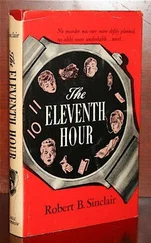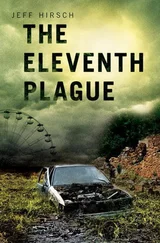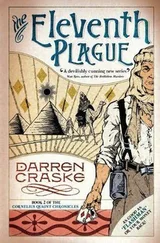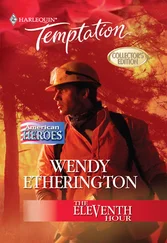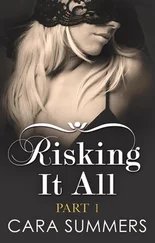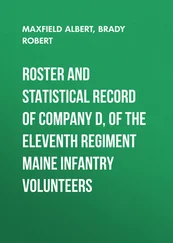Anthony Summers - The Eleventh Day
Здесь есть возможность читать онлайн «Anthony Summers - The Eleventh Day» весь текст электронной книги совершенно бесплатно (целиком полную версию без сокращений). В некоторых случаях можно слушать аудио, скачать через торрент в формате fb2 и присутствует краткое содержание. Жанр: Старинная литература, на английском языке. Описание произведения, (предисловие) а так же отзывы посетителей доступны на портале библиотеки ЛибКат.
- Название:The Eleventh Day
- Автор:
- Жанр:
- Год:неизвестен
- ISBN:нет данных
- Рейтинг книги:3 / 5. Голосов: 1
-
Избранное:Добавить в избранное
- Отзывы:
-
Ваша оценка:
- 60
- 1
- 2
- 3
- 4
- 5
The Eleventh Day: краткое содержание, описание и аннотация
Предлагаем к чтению аннотацию, описание, краткое содержание или предисловие (зависит от того, что написал сам автор книги «The Eleventh Day»). Если вы не нашли необходимую информацию о книге — напишите в комментариях, мы постараемся отыскать её.
The Eleventh Day — читать онлайн бесплатно полную книгу (весь текст) целиком
Ниже представлен текст книги, разбитый по страницам. Система сохранения места последней прочитанной страницы, позволяет с удобством читать онлайн бесплатно книгу «The Eleventh Day», без необходимости каждый раз заново искать на чём Вы остановились. Поставьте закладку, и сможете в любой момент перейти на страницу, на которой закончили чтение.
Интервал:
Закладка:
There is disapproval, too, of the way Jones’s thermite conclusions—grave, were they to be taken seriously—have been presented. The findings have not been subjected to peer review, the process under which a scholarly work is subjected to scrutiny by other experts in the same field. While most scientists consider peer review essential, Jones’s thoughts on thermite seem first to have appeared in a paper he posted on a university website, then in the Journal of 9/11 Studies . The website of the Journal , of which Jones is coeditor, claims that it is “peer-reviewed.” Fellow scientist Ryan Mackey dismisses that assertion as a “masquerade … cargo-cult science.”
Thermite aside, Griffin and like-minded theorists espouse the idea that explosives of some sort were used to bring down the towers. They base their suspicion to a great degree on what witnesses said they saw and heard—understandably, or so one might think.
Wall Street Journal reporter John Bussey, for example, reported in a Pulitzer-winning article that from the Journal building near the South Tower he “heard metallic crashes and looked up out of the office window to see what seemed like perfectly synchronized explosions coming from each floor.… One after another, from top to bottom, with a fraction of a second between, the floors blew to pieces.”
Bussey later recalled having seen “individual floors, one after the other exploding outward.” “I thought to myself, ‘My God, they’re going to bring the building down.’ And they, whoever they were, had set charges.” “It just descended like a timed explosion,” said Beth Fertig of WNYC Radio, “like when they are deliberately bringing a building down.”
The skeptics also pounced early on what Van Romero of the New Mexico Institute of Mining and Technology—unlike the reporters an expert on explosives—told the Albuquerque Journal on the day of the attacks. “My opinion is, based on the videotapes,” he said, “that after the airplanes hit the World Trade Center there were some explosive devices inside the buildings that caused the towers to collapse.”
Ten days later, however, Romero reversed himself. It had initially looked to him as though explosives triggered the collapses, he said, but a further look at the videotapes led him to agree with colleagues that—essentially as the NIST would conclude four years later—the buildings fell because fire weakened their steel structures.
There’s the nub. So many people, with less expertise in explosives than Romero or none at all, merely said what they thought they saw and heard. “Then we heard a loud explosion or what sounded like a loud explosion,” Fire battalion chief John Sudnik recalled, “and looked up and I saw Tower Two start coming down.” “First I thought it was an explosion,” said firefighter Timothy Julian. “I thought maybe there was a bomb on the plane, but delayed type of thing, you know, secondary device.”
“There was what appeared to be at first an explosion,” said Chief Frank Cruthers, also describing the collapse of the South Tower. “It appeared at the very top, simultaneously from all four sides, materials shot out horizontally. And then there seemed to be a momentary delay before you could see the beginning of the collapse.”
“The lowest floor of fire in the South Tower actually looked like someone had planted explosives around it,” said battalion chief Brian Dixon. “Everything blew out … I thought, ‘Jeez, this looks like an explosion up there.’ ”
Dr. Griffin seized on these accounts and more. On occasion, however, he was less than professorial in his editing. Griffin omitted, for example, what battalion chief Dixon said in his very next sentence, after recalling that he thought he was witnessing an “explosion.” He had continued, “I guess in some sense of time we looked at it and realized, ‘No, actually it just collapsed.’ That’s what blew out the windows, not that there was an explosion there.”
Without having done a statistical study of the some five hundred formal interviews conducted with 9/11 emergency workers, it appears to the authors that the vast majority of them referred not to apparent explosions—as in detonations—but usually more vaguely, to loud bangs, thunder, rumbling, booms, or trainlike sounds.
There may even have been some actual explosions, but not ones indicating deliberate demolition. “You heard nothing but explosions all day,” firefighter Salvatore Torcivia remembered. “The fires, the jet fuel burning. The nearby buildings had air conditioning and refrigerator units—they were all exploding from the super heat. It sounded like bombs going off. I believe the Secret Service had their armory in one of the towers. That stuff, ordnance, was going off.”
After an analysis of Griffin’s eye and ear witnesses to explosion, his critic Ryan Mackey notes that all were nonexperts, “relaying their impressions of a horrifically chaotic and deadly experience.” There is no good reason to consider the witnesses’ words evidence of the use of explosives.
To believe explosives were involved, moreover, one would have to account for how they were planted—in multiple locations—in advance of the attacks. Griffin states that demolition of the Twin Towers would have required more explosive than did that in 2000 of the Seattle Kingdome stadium—at the time the largest structure ever brought down by controlled implosion.
His tormentor Mackey, calculating that this would have meant bringing more than 60,000 kilograms of explosive into each tower, notes that the professor “produced no explanation of how such a staggering amount of explosives could have been smuggled into the Towers without detection, how it could have been placed without being seen, how many individuals would have been required to plant it all.”
The 2005 report of the National Institute of Standards and Technology summed up the matter. Its experts had found no evidence, the report said, “for alternative hypotheses suggesting that the WTC towers were brought down by controlled demolition using explosives.”
The authors have seen nothing, in all the verbiage of the skeptical literature, to persuade us otherwise.
IN 2010, Dr. Griffin came out with yet another book, on what he described as “The Official Account’s Achilles’ Heel.” The “smoking gun” that he and others see is the collapse on the evening of September 11 of the forty-seven-story World Trade Center Building 7.
Though not struck by an airplane, Building 7 was catastrophically damaged by chunks of debris from the collapsing North Tower, caught fire, and burned all day. When it in turn fell, WTC 7 became the first known instance in the world of a tall, modern, steel-reinforced building brought down apparently as a result of fire.
It was, The New York Times reported later, “a mystery that under normal circumstances would probably have captured the attention of the city and the world”—had its collapse not been eclipsed by that of the Twin Towers themselves. The Times said engineers expected to spend months piecing together the “disturbing puzzle.” In the event, it took the NIST’s experts seven years.
According to the NIST, in its 2008 report, WTC 7 was brought down by “fire-induced progressive collapse,” a chain of events technically unlike those in the Twin Towers, beginning with the failure of one key structural column. The NIST “found no evidence supporting the existence of a blast event.”
There has long been witness testimony militating against the notion that the WTC 7 collapse was triggered by explosions. Fire Department interviewees recalled having anticipated the collapse of WTC 7 from early in the afternoon of September 11. Frank Fellini, a senior chief, said the building was a “major concern” because of the hit it took from the fall of the North Tower. “When it fell, it ripped steel out from between the third and sixth floors … We were concerned that the fires on several floors and the missing steel would result in the building collapsing. So for the next five or six hours we kept firefighters from working anywhere near that building.”
Читать дальшеИнтервал:
Закладка:
Похожие книги на «The Eleventh Day»
Представляем Вашему вниманию похожие книги на «The Eleventh Day» списком для выбора. Мы отобрали схожую по названию и смыслу литературу в надежде предоставить читателям больше вариантов отыскать новые, интересные, ещё непрочитанные произведения.
Обсуждение, отзывы о книге «The Eleventh Day» и просто собственные мнения читателей. Оставьте ваши комментарии, напишите, что Вы думаете о произведении, его смысле или главных героях. Укажите что конкретно понравилось, а что нет, и почему Вы так считаете.



